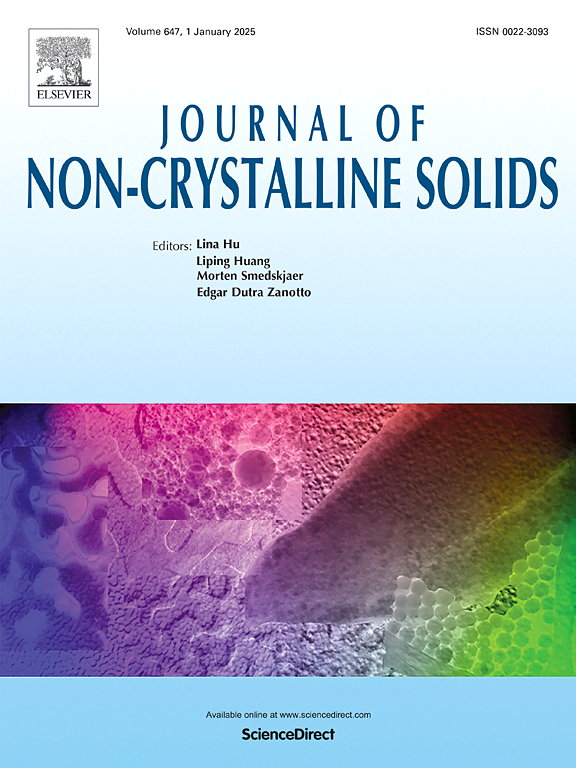基于机器学习力场与分子动力学相结合的Cu-Zr体系结构与性能比较研究
IF 3.2
3区 材料科学
Q1 MATERIALS SCIENCE, CERAMICS
引用次数: 0
摘要
本文采用机器学习和分子动力学模拟相结合的方法,在原子尺度上系统地研究了Cu-Zr金属玻璃体系的结构和相关性能,揭示了Cu50Zr50金属玻璃优异的玻璃化能力、力学性能和热稳定性的结构根源。初步通过组份筛选和优化得到了最稳定的CuxZr100-x (x = 20,50,65,80)体系。随后,通过分析径向分布函数g(r)的变化、Voronoi多面体含量的分布、原子间键角的分布特征以及电子结构与均方位移的内在相关性,揭示了Cu浓度调控相关性质的潜在机制。综上所述,在二元Cu-Zr金属玻璃体系中,Cu50Zr50具有最佳玻璃化能力的结构,为其他金属玻璃的设计和优化提供了参考。本文章由计算机程序翻译,如有差异,请以英文原文为准。
A comparative study on the structure and properties in the Cu-Zr system based on the combination of machine learning force field and molecular dynamics
This paper systematically studies the structure and related properties of the Cu-Zr metallic glass system at the atomic scale using a combination of machine learning and molecular dynamics simulations, revealing the structural origins of the excellent glass-forming ability, mechanical properties, and thermal stability of Cu50Zr50 metallic glass. Initially, the most stable CuxZr100-x (x = 20, 50, 65, 80) system is obtained by compositional screening and optimization. Subsequently, the underlying mechanism by which Cu concentration regulates the related properties was revealed by analyzing the variations in the radial distribution function g(r), the distribution of Voronoi polyhedral content, the distribution characteristics of interatomic bond angles, and the intrinsic correlation between electronic structure and mean squared displacement. To conclude, Cu50Zr50 has the structure with the optimal glass-forming ability in the binary Cu-Zr metallic glass system, and the paper provides a reference for the design and optimization of other metallic glasses.
求助全文
通过发布文献求助,成功后即可免费获取论文全文。
去求助
来源期刊

Journal of Non-crystalline Solids
工程技术-材料科学:硅酸盐
CiteScore
6.50
自引率
11.40%
发文量
576
审稿时长
35 days
期刊介绍:
The Journal of Non-Crystalline Solids publishes review articles, research papers, and Letters to the Editor on amorphous and glassy materials, including inorganic, organic, polymeric, hybrid and metallic systems. Papers on partially glassy materials, such as glass-ceramics and glass-matrix composites, and papers involving the liquid state are also included in so far as the properties of the liquid are relevant for the formation of the solid.
In all cases the papers must demonstrate both novelty and importance to the field, by way of significant advances in understanding or application of non-crystalline solids; in the case of Letters, a compelling case must also be made for expedited handling.
 求助内容:
求助内容: 应助结果提醒方式:
应助结果提醒方式:


